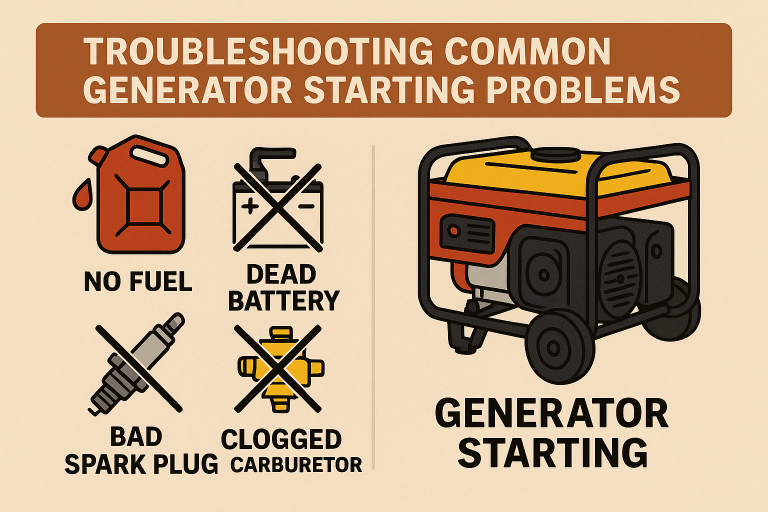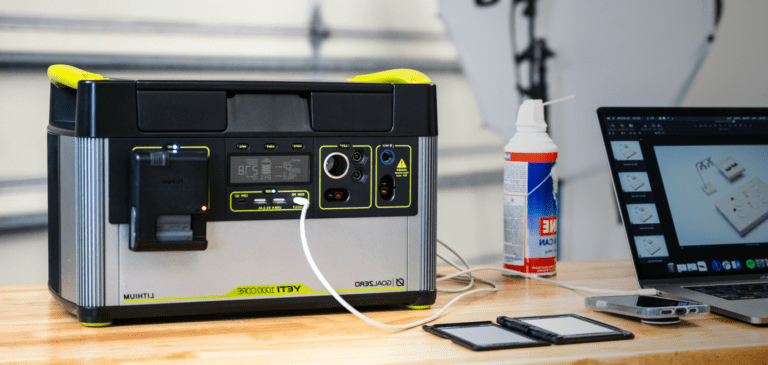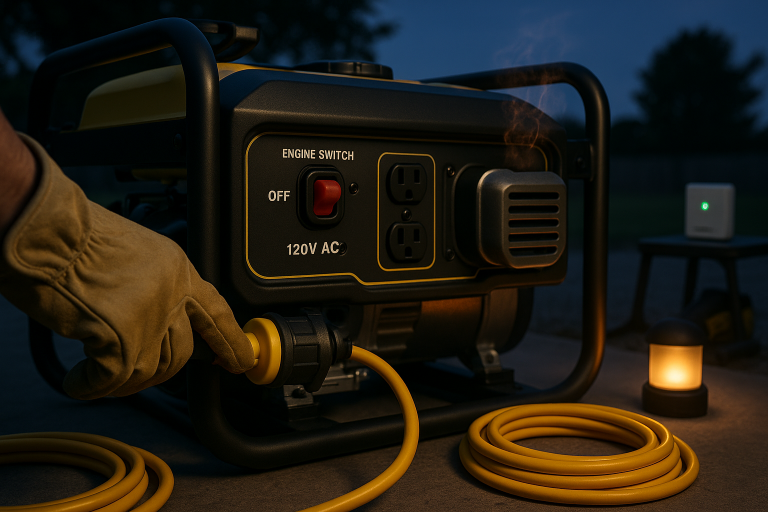Size of Generator Needed to Power a House.
As a homeowner, I need to determine the size of the generator that can power my house during outages. It may seem overwhelming, but understanding the factors that influence wattage requirements and the types of generators available can simplify the decision-making process.
In this article, I’ll guide you through the steps to determine the right generator size for your home. We’ll explore power consumption, types of generators, and factors to consider.
By the end, you’ll have the knowledge to choose the perfect generator for your needs and budget.
Key Takeaways
- The size of the generator needed depends on the amount of power consumed by the home.
- The wattage needed can vary based on the number of appliances and electronics in the home, as well as the size of the home and the climate.
- To calculate the total wattage needed, find the wattage of appliances and electronics and add them up.
- It is recommended to choose a generator slightly larger than the total wattage needed to accommodate any additional power needs.
Understanding Power Consumption
To understand my power consumption, I need to calculate the total wattage needed for my home.
One way to reduce power consumption is by using energy-efficient appliances. These appliances are designed to use less electricity without sacrificing performance. By replacing old, inefficient appliances with energy-efficient ones, I can significantly reduce my power consumption.
Another option for powering my home is through renewable energy sources. Solar panels, for example, harness the power of the sun to generate electricity. This not only helps reduce my reliance on traditional power sources but also lowers my carbon footprint.
Calculating Wattage Requirements
Fortunately, I can easily calculate my wattage requirements by adding up the wattage of all my appliances and electronics.
To determine the power needs of my home, I need to find the wattage of each item. This can usually be found on the label or in the manual. For example, if my refrigerator uses 500 watts, a few lights use 100 watts, and my phone charger uses 50 watts, the total wattage needed would be 750 watts.
Additionally, I should consider other appliances like a microwave (1,000 watts) and a TV (200 watts) to get a more accurate total wattage.
It’s important to choose a generator with a wattage capacity slightly larger than my total wattage needs to accommodate any additional power requirements.
Types of Generators for Homes
Since I’m considering purchasing a generator for my home, it’s important to explore the different types available. Here are the types of generators for homes:
- Portable generators: These small, gas-powered generators are easy to move around and less expensive. However, they’re less powerful and can be loud.
- Standby generators: These larger, more powerful generators are permanently installed and can automatically turn on during a power outage. They’re more expensive but can power an entire home. Additionally, standby generators require regular maintenance to ensure they’re in proper working condition.
- Inverter generators: These smaller, more efficient generators produce clean power and are suitable for sensitive electronics. They’re quieter than portable generators and provide stable power output.
Among these types, standby generators have the benefit of automatically providing power during an outage, eliminating the need for manual intervention. They also require regular maintenance to ensure optimal performance and longevity.
Factors to Consider in Generator Selection
When choosing a generator for my home, I need to take into account the size and power needs of my house.
It’s important to consider the noise level and fuel efficiency of the generator as well.
Noise level is a crucial factor to consider, especially if the generator will be placed near living spaces. Look for generators that have noise-reduction features or are specifically designed to operate quietly.
Fuel efficiency is also important to ensure that the generator can run for longer periods without consuming excessive fuel. Generators with advanced fuel efficiency technology can save money on fuel costs and minimize environmental impact.
Considering these factors will help me choose a generator that meets my power needs while also being quiet and fuel-efficient.
Properly Breaking in a New Portable Generator
Breaking in a new portable generator involves gradually increasing the load and running it for a specified period to ensure optimal performance. Here are some key steps to properly break in a new portable generator:
- Start by checking the oil and fuel levels and make sure they’re at the recommended levels.
- Run the generator at a low load for the first few hours, allowing the engine to warm up and the internal components to settle.
- Gradually increase the load over time, adding more appliances or electronics to mimic real-life usage.
- Run the generator for the recommended break-in period, which is usually around 20-30 hours.
- During the break-in period, monitor the generator for any unusual noises or vibrations and address them promptly.
- Perform regular maintenance tasks, such as oil changes and filter replacements, as recommended by the manufacturer.
- If any issues arise, refer to the generator troubleshooting tips provided in the user manual or consult a professional for assistance.
Choosing the Right Transfer Switch for Your Generator
As I consider which transfer switch to choose for my generator, I need to ensure it meets my power needs and is compatible with my home’s electrical system. The transfer switch is an essential component that allows for a safe and efficient switch from utility power to generator power during a power outage.
When selecting a transfer switch, it’s important to consider factors such as the generator’s maintenance and installation requirements. Some transfer switches may require specific wiring or additional equipment for proper installation.
Additionally, regular generator maintenance is crucial to ensure its reliability and longevity. By choosing the right transfer switch for my generator, I can ensure a seamless transition to backup power and peace of mind during power outages.
Can Portable Generators Power a Home During Outages?
My experience with portable generators has shown that they can power a home during outages. Here are some pros and cons of using portable generators during power outages:
Pros:
- Portable generators are more affordable compared to standby generators.
- They’re easy to move around and can be used in different locations.
- Portable generators can power essential appliances and electronics during outages.
Cons:
- Portable generators are less powerful compared to standby generators.
- They’ve limited fuel capacity and may need frequent refueling.
- Portable generators can be noisy and may not be suitable for quiet neighborhoods.
When comparing the cost and efficiency of standby generators versus portable generators for powering a home during outages, standby generators are more expensive but can provide power to the entire home. Portable generators, on the other hand, are less expensive but have limited power output. The choice between the two depends on the specific power needs and budget of the homeowner.
Conclusion
In conclusion, determining the size of generator needed to power your house is crucial for preparedness during power outages. By understanding your power consumption, calculating wattage requirements, and considering factors such as the type of generator and transfer switch, you can choose the right generator for your home.
Whether it’s a portable or standby generator, proper maintenance and break-in procedures are essential for optimal performance. With the right generator, you can ensure that your home stays powered during outages, providing you with peace of mind.



